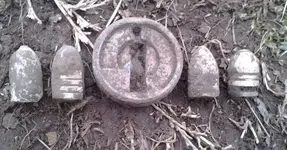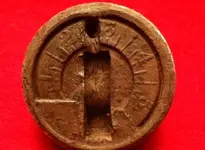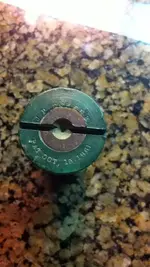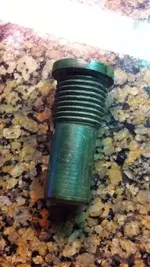Because there is a request for input, here are my comments in response to various people's "wonderings."
The Bormann fuze found by Jpro is definitely one of the yankee-made versions.
The info about Bormann fuzes at the civilwartillery.com website is incomplete -- and thus can be misleading. Here is what that website does not mention about the time-markings on CS-made Bormann fuzes and pre-1866 US-made Bormann fuzes:
A Bormann fuze whose time-markings end with a raised line representing 5-&-1/2-seconds is only CS-made.
Ending with a 5-&-1/4 seconds line can be either CS-made or US-made.
Ending with a 5-seconds line is only US-made.
That website shows an 1866 (post-civil-war) drawing of a US-made Bormann fuze which ends with a 5-&-1/2-seconds line. No examples of that version have ever been found on a civil war battlefield. So, either that version of US-made Bormann fuze did not exist until after the war ended, or the artist made a mistake in the drawing.
The shell's exlosion almost always damages a Bormann fuze. There are two possibilities for explaining why Jpro's fuze seems to show no shell-explosion damage at all.
1- It is a super-rare exception to the shell-exploson damage "rule."
2- Its "face" was pierced by a cannoneer (at the 2-&-1/2-seconds line) as part of the firing procedure, but before that shell could be fired, a "cease firing" order was given. Being already pierced, that fuze would be useless in the future, so it was unscrewed from the shell, and discarded.
I suspect the latter possibility is the correct answer, because the lower right side of that fuze's wrench-slot shows a little deformation made by the fuze-wrench when turning it in the "unscrew" direction (counterclockwise.) Related to that, I also seem to see a little "skip-mark" made by the wrench at the upper left of the wrench-slot.
Also:
Jpro didn't specifically say that he dug his unfired yankee bullets in the same yard where he found the yankee Bormann fuze. But if the fuze and those unfired bullets did come from the same spot, it's extremely unlikely that a fuze from a FIRED/EXPLODED yankee artillery shell would be found a very short distance away from UNFIRED yankee bullets. You don't fire a shell at a location occupied by your own troops. But a "discarded" yankee fuze would be found at a location occupied by yankee troops.






